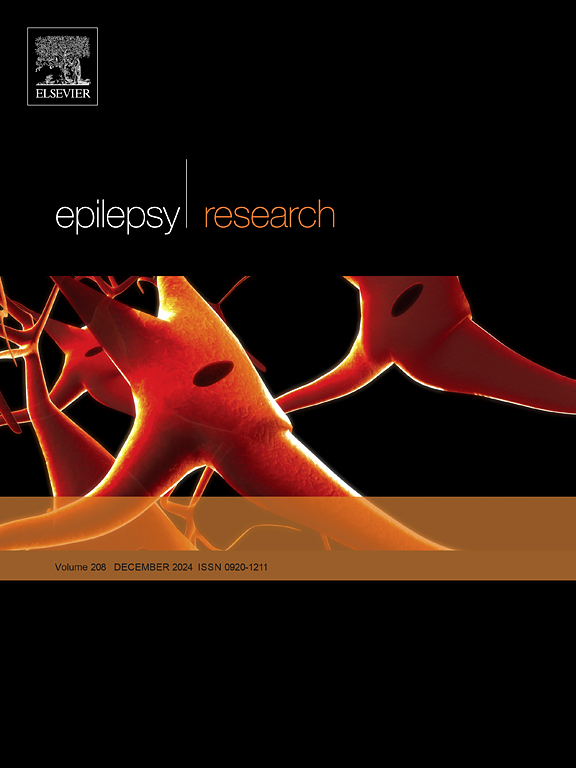Turning data analytics into an organisational asset: A landscape population analysis of 5720 people with epilepsy attending outpatient care in Ireland
IF 2
4区 医学
Q3 CLINICAL NEUROLOGY
引用次数: 0
Abstract
Introduction
The National Clinical Programme for Epilepsy (NCPE) in Ireland identified analytics applied to Electronic Patient Record (EPR) data as an organisational asset for driving continuous service improvement. This study describes the diagnostic, therapeutic and prognostic characteristics of a population of people with epilepsy (PwE) currently taking anti-epileptic drugs. This is an epidemiological question of interest to clinicians, PwE and their families, along with those involved in heath policy, and health service planning, implementation, monitoring and evaluation.
Material and methods
A de-identified data extract of 5720 PwE was taken from the Irish epilepsy EPR. Phenotypical characteristics were aggregated and visualised using data analytics. A set of landscape analyses fully describe this subpopulation in terms of epilepsy types, seizure types, seizure frequencies, aetiologies, comorbidities and numbers of anti-epileptic-drugs taken.
Results
A multi-disciplinary team of epilepsy healthcare providers and stakeholders reviewed the analytics results from which they identified a number of policy issues that required improvement relating to current epilepsy service delivery including:
- •Equity of care relating to less refractory and older people with epilepsy.
- •Further review of patient cohorts taking greater than 4 AEDs with a view to describing underlying aetiologies of patients with complex epilepsy that may be poorly controlled.
- •Closer integration of other clinical disciplines that reflects diverse needs of PwE e.g. mental health and geriatric services.
- •Development of national capacity for genetic testing and preventative strategies for epilepsy.
Significance
This study demonstrates how interrogation and analysis of large volumes of patient data can be applied to a real-world epilepsy EPR that is used in frontline epilepsy clinical care. This analytics approach was supported by a multi-disciplinary review of outputs to support a data-driven approach that interprets analytics with a view to improving actual clinical care.
将数据分析转化为组织资产:爱尔兰门诊治疗的5720名癫痫患者的景观人口分析
爱尔兰国家癫痫临床规划(NCPE)确定了应用于电子病历(EPR)数据的分析作为推动持续服务改进的组织资产。本研究描述了目前服用抗癫痫药物的癫痫患者(PwE)的诊断、治疗和预后特征。这是临床医生、PwE及其家属以及参与卫生政策和卫生服务规划、实施、监测和评价的人员感兴趣的一个流行病学问题。材料与方法从爱尔兰癫痫EPR中提取5720个PwE的去识别数据。表型特征汇总和可视化使用数据分析。一组景观分析在癫痫类型、发作类型、发作频率、病因、合并症和服用抗癫痫药物的数量方面充分描述了这一亚群。结果一个由癫痫医疗保健提供者和利益相关者组成的多学科团队审查了分析结果,从中确定了与当前癫痫服务提供相关的一些需要改进的政策问题,包括:•与难治程度较低和老年癫痫患者相关的护理公平。•进一步回顾服用超过4种aed药物的患者队列,以描述可能控制不良的复杂癫痫患者的潜在病因。•更密切地整合其他临床学科,以反映残疾人的不同需求,例如心理健康和老年服务。•发展国家基因检测能力和癫痫预防战略。本研究展示了如何将大量患者数据的询问和分析应用于现实世界的癫痫EPR,用于一线癫痫临床护理。这种分析方法得到了对输出的多学科审查的支持,以支持数据驱动的方法,以改善实际临床护理的角度解释分析。
本文章由计算机程序翻译,如有差异,请以英文原文为准。
求助全文
约1分钟内获得全文
求助全文
来源期刊

Epilepsy Research
医学-临床神经学
CiteScore
0.10
自引率
4.50%
发文量
143
审稿时长
62 days
期刊介绍:
Epilepsy Research provides for publication of high quality articles in both basic and clinical epilepsy research, with a special emphasis on translational research that ultimately relates to epilepsy as a human condition. The journal is intended to provide a forum for reporting the best and most rigorous epilepsy research from all disciplines ranging from biophysics and molecular biology to epidemiological and psychosocial research. As such the journal will publish original papers relevant to epilepsy from any scientific discipline and also studies of a multidisciplinary nature. Clinical and experimental research papers adopting fresh conceptual approaches to the study of epilepsy and its treatment are encouraged. The overriding criteria for publication are novelty, significant clinical or experimental relevance, and interest to a multidisciplinary audience in the broad arena of epilepsy. Review articles focused on any topic of epilepsy research will also be considered, but only if they present an exceptionally clear synthesis of current knowledge and future directions of a research area, based on a critical assessment of the available data or on hypotheses that are likely to stimulate more critical thinking and further advances in an area of epilepsy research.
 求助内容:
求助内容: 应助结果提醒方式:
应助结果提醒方式:


